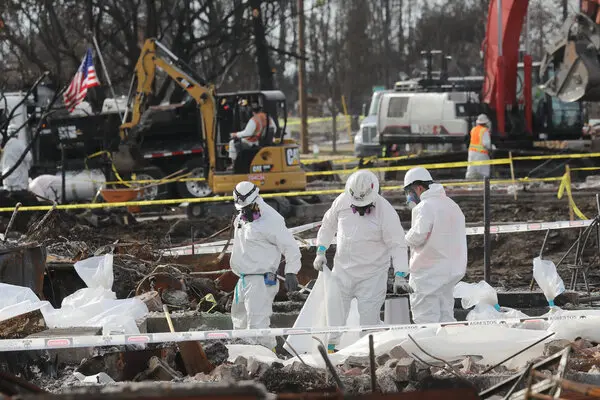New York’s industrial history is rich and varied, but it has also left behind a hazardous legacy: airborne asbestos. Asbestos, once widely used in construction, manufacturing, and various industrial processes, is now known for its deadly health effects. When asbestos fibers become airborne, they pose an invisible yet serious threat to anyone who inhales them. The long-term consequences of asbestos exposure, including the development of mesothelioma, are particularly concerning for workers and residents in New York’s industrial areas.
For those affected by asbestos-related diseases, seeking legal assistance is crucial. Legal professionals can help victims navigate the complex legal landscape, ensuring they receive the compensation and justice they deserve.
The Legacy of Asbestos Use in New York’s Industrial Sectors
Asbestos was once considered a miracle material due to its fire-resistant properties and durability. It was used extensively across various industries in New York, including construction, shipbuilding, and manufacturing. However, the widespread use of asbestos came at a high cost. Workers in these industries were often exposed to asbestos fibers without adequate protection, leading to a significant number of mesothelioma cases decades later.
The legacy of asbestos use is still felt today, particularly in New York’s older industrial areas. Buildings and facilities that were constructed or operated before the dangers of asbestos were widely recognized may still contain asbestos materials. As these structures age and deteriorate, the risk of asbestos fibers becoming airborne increases, posing a serious health risk to current workers and residents.
How Asbestos Becomes Airborne and Its Health Impacts
Asbestos fibers become airborne when asbestos-containing materials (ACMs) are disturbed, damaged, or deteriorate over time. Below is a list summarizing the key points on how asbestos becomes airborne and its associated risks:
- Disturbance of ACMs: Asbestos fibers are released into the air during activities such as demolition, renovation, or maintenance of older buildings containing asbestos.
- Damage or deterioration: Over time, ACMs can break down naturally, causing asbestos fibers to become airborne even without direct disturbance.
- Inhalation of fibers: Once airborne, asbestos fibers can be easily inhaled, leading to their lodging in the lungs and other parts of the respiratory system.
- Serious health conditions: Inhaled asbestos fibers can cause severe health conditions, including asbestosis, lung cancer, and mesothelioma.
The Risk to Workers in New York’s Industrial Areas
Workers in New York’s industrial areas are at a heightened risk of asbestos exposure due to the nature of their work environments. Industries such as construction, manufacturing, and shipbuilding often involve activities that can disturb asbestos-containing materials, releasing fibers into the air. Despite regulations designed to protect workers, asbestos exposure still occurs, particularly in older buildings and facilities where asbestos is heavily used.
The risk is not limited to workers; residents living near industrial areas may also be exposed to airborne asbestos. Environmental contamination can occur when asbestos fibers are released into the air and settle in surrounding neighborhoods. This community-wide exposure adds another layer of complexity to the asbestos crisis in New York, making it essential for both workers and residents to be aware of the risks and take precautions. For those affected, seeking help from a New York mesothelioma lawyer can be a crucial step in addressing the consequences of asbestos exposure and securing necessary compensation.
The Role of Environmental Regulations in Mitigating Asbestos Risks
Over the years, stringent environmental regulations have been put in place to mitigate the risks associated with asbestos exposure. The Environmental Protection Agency (EPA) and the Occupational Safety and Health Administration (OSHA) have established guidelines for the safe handling, removal, and disposal of asbestos-containing materials. These regulations are designed to protect both workers and the general public from the dangers of asbestos exposure.
However, the effectiveness of these regulations depends on strict enforcement and compliance. In New York’s industrial areas, where many buildings and facilities are decades old, the risk of asbestos exposure remains significant. Ensuring that these regulations are followed is crucial in preventing further exposure and protecting public health. Legal action against entities that fail to comply with these regulations can also serve as a powerful deterrent and help secure compensation for affected individuals.
Legal Recourse for Asbestos Exposure Victims
For individuals who have been exposed to asbestos and subsequently developed mesothelioma or other asbestos-related diseases, legal recourse is often necessary to obtain compensation for medical expenses, lost income, and other damages. Filing a lawsuit against the responsible parties, whether they are employers, manufacturers, or property owners, can be a complex and challenging process.
Legal professionals specializing in asbestos litigation can provide the expertise needed to navigate this legal journey. These lawyers have the knowledge and resources to build a strong case on behalf of their clients. Successful legal action not only provides financial compensation but also holds accountable those responsible for exposing individuals to this deadly material.
The Importance of Early Detection and Regular Health Screenings
Given the long latency period of mesothelioma, early detection is crucial for improving treatment outcomes. Individuals who have worked in or lived near New York’s industrial areas should be particularly vigilant about their health, especially if they have a history of asbestos exposure. Regular health screenings, including imaging tests and lung function assessments, can help detect early signs of asbestos-related diseases.
Early detection allows for a wider range of treatment options and can significantly improve the prognosis for mesothelioma patients. It also provides a critical window for legal action, as pursuing a claim sooner rather than later can make a significant difference in the outcome. Those at risk should consult with medical professionals to establish a monitoring plan and seek legal advice if they suspect asbestos exposure.
The Ongoing Need for Asbestos Awareness and Advocacy
Despite the known dangers of asbestos, awareness remains a key issue in preventing further exposure. Advocacy groups play a vital role in educating the public about the risks associated with asbestos and pushing for stronger regulations and enforcement. These organizations also provide support to those affected by asbestos-related diseases, offering resources and guidance for navigating the complexities of treatment and legal action.
Continued advocacy is essential to ensure that the dangers of asbestos are not forgotten, especially in areas like New York’s industrial sectors where the risk remains high. By raising awareness and supporting those impacted by asbestos exposure, we can work toward a future where the invisible threat of airborne asbestos is no longer a danger to public health.






